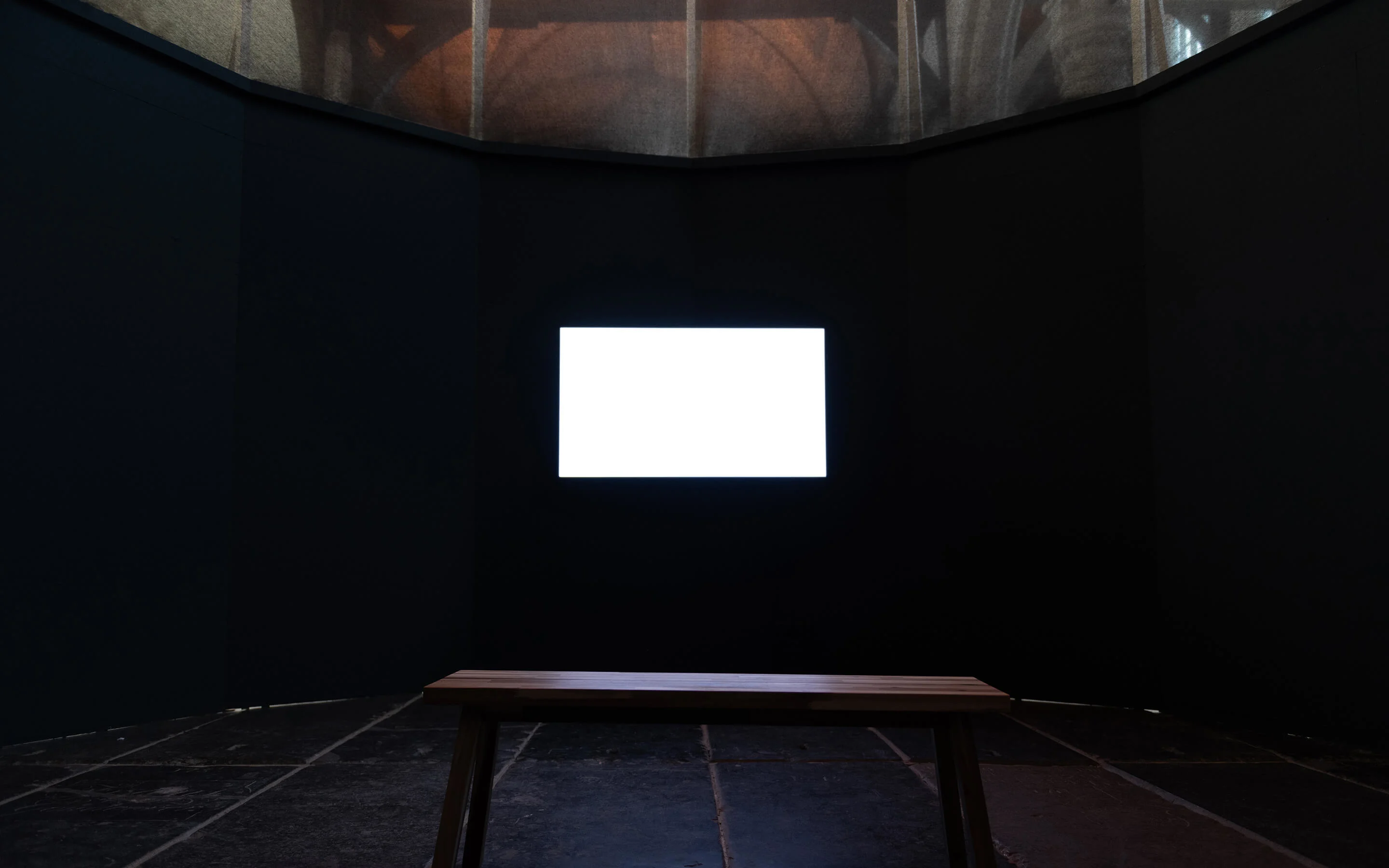
Artist duo Children of the Light, made up of Christopher Gabriel and Arnout Hulskamp, describe light as an “ungraspable” medium, and they’ve been working to harness its power for the best part of a decade. Their live installations transform and illuminate the spaces they’re placed in, from iconic exhibition spaces to 800 year old churches. Here, they walk Joe Zadeh through some of their standout projects.
It wasn’t until visual artists Children of the Light saw their work, Warping Halos, in the 2000 square metre main hall of Amsterdam’s iconic De Gashouder, that they realised they had created something truly primal. Thousands of people had filed into the dark hall to view the two metre-diameter rotating ring of ever-changing electric light at its center, shrouded in a thin cloud of haze, and accompanied by the sound of a live soprano singer. Christopher Gabriel and Arnout Hulskamp (Children of the Light) stepped back from the glowing halo, back from the crowd, back further beyond the soundsystem, until they were looking on their work from the furthest wall of the hall. “From that distance,” they tell me, “it was like seeing people gathered around a campfire. It was magical.”
The soothing hypnosis of staring into a fire is ancient and familiar to everyone. It is couched in evolutionary habit; in a subconscious and sublime awe at the nature of light and its importance to our survival. From plants to animals, light from the sun makes it possible for all life on earth to exist, and without it there would be no oxygen, no heat, no wind, no clouds. We couldn’t even perceive reality if it wasn’t for the washes of color caused by the interaction of light and matter. “Everything we see,” said the French impressionist painter Paul Cezanne, “is light.”
We see our role as strengthening the relationship between us and the universe.
It is this sort of fundamental understanding of light and our deep connection to it that Christopher and Arnout aspire to explore in their art. For the best part of a decade, the duo have been creating performative electric light installations, from the illusion of an endless corridor (Transito, 2018) to the kinetic sculpture that simulated the earth’s horizon (Between Light, 2019). Inspired by the Zero art movement, their work is pure – stripped down to the most essential of materials – and yet it always reaches for something sacred and profound.
Their collaborative work began in 2012 with Mirror Moon, which was created as a visual accompaniment for concerts by Darkside (the band of Nicolas Jaar and Dave Harrington.) The work – a huge two-sided circular mirror that glided around the space as rhythmic beams of light were shot against it – became a phenomenon in its own right, and set them on a path of glowing obsession. “We are always trying to capture light,” they say, “but the moment you catch it, it transforms into something else. This medium is so ungraspable, and that makes it such an exciting subject to us.”
Mirror Moon

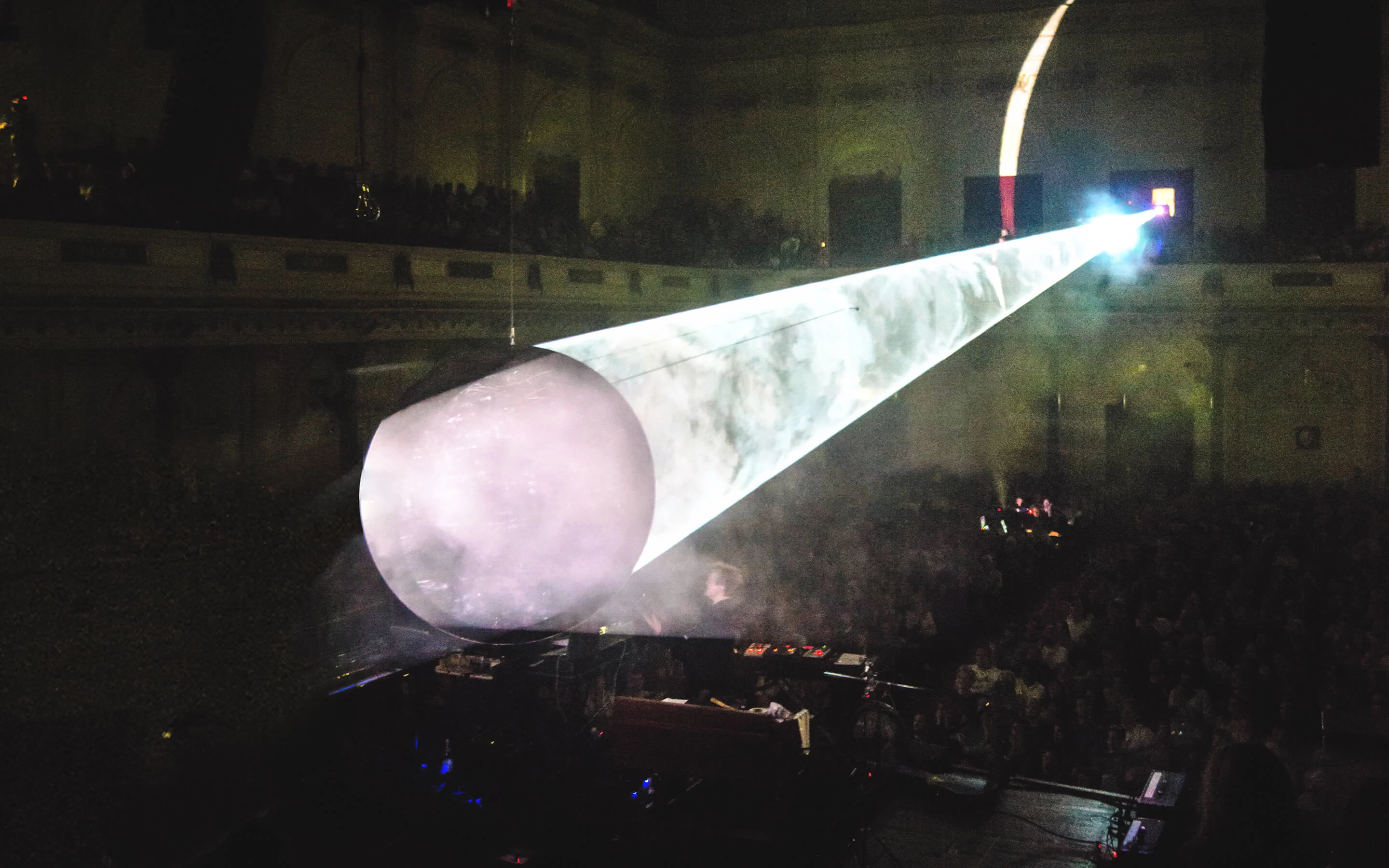
The first ever Darkside concert featuring the “Mirror Moon” took place in Paris, and started with 15 minutes of pure darkness. “People wanted to know what was going on. They knew there was something mysterious onstage,” they say. “So they all got their phones out with their torch lights and pointed them at the stage to discover what was there. And, because it was a huge mirror, all they saw was themselves reflected back. We think that made it extra wild.”
Apart from a 15 minute rehearsal prior to the gig, the duo had never seen how their moon would perform alongside music and above a crowd of thousands: then the lights switched on and it began to move and spin. “When it came on,” they say, “it was like we’d cracked through to another dimension. It looked like a wormhole was swiping over the crowd, and people were being sucked into it. You could see people were really experiencing the work. We think in a club or concert venue, something like that really bonds people. Driving back from Paris the next day, we decided to make these things for the rest of our life.”
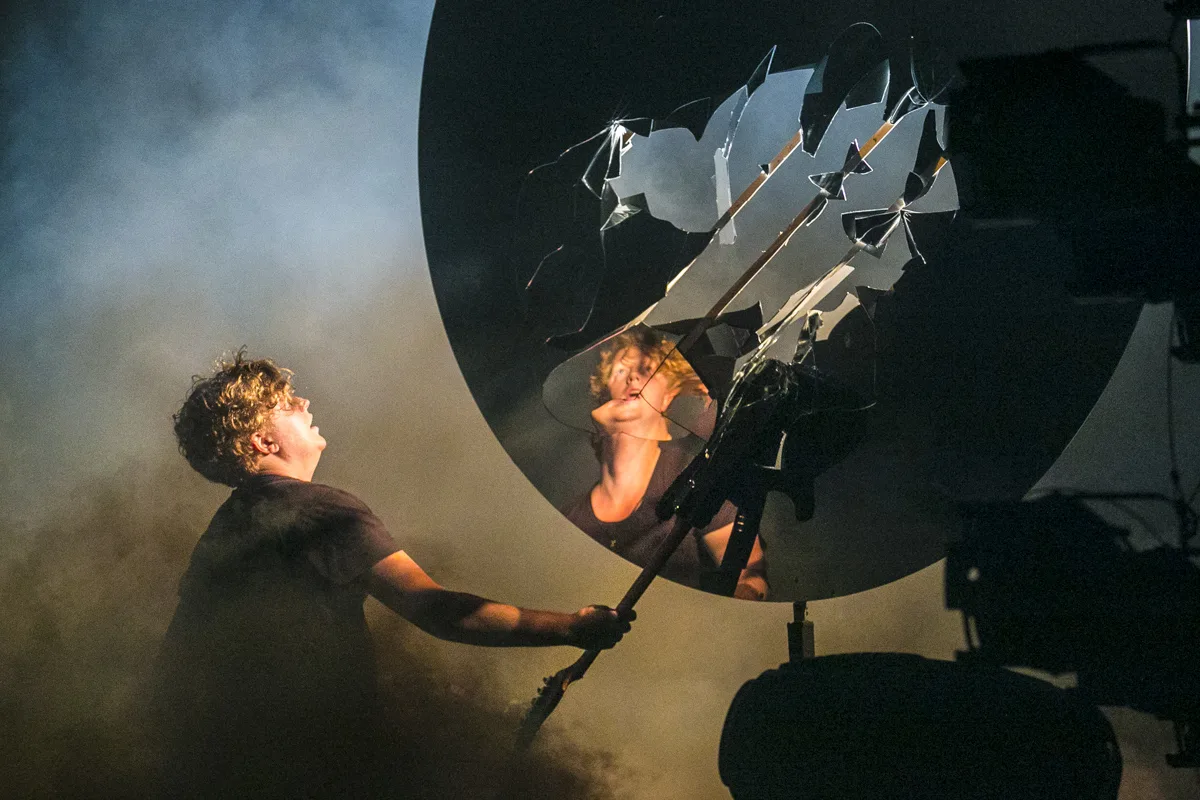

Warping Halos
Up until their work Warping Halos in 2019, Children of the Light had never worked with anything but white light. “But when we began Warping Halos, we thought this was the moment we could step back and deconstruct it, and figure out what all the colors mean to us.” They were drawn to the idea of the halo, a naturally occurring phenomenon that can sometimes be seen when light from the sun or moon is refracted and split into colors by ice crystals in the air, to create a circle or arch in the sky. “There was also the spiritual aspect of a halo which appealed to us; the halo as the aura or light of a person.” The resulting piece was the aforementioned illuminated ring, which hung in space, like a portal, and rotated as different colors danced across its surface.
After the pandemic, the ritualistic qualities of the work were enhanced when the duo were invited to recreate the work. For a special performance at TivoliVredenburg in 2021, they redesigned the light patterns and introduced a choir of 12 singers. “It was very interesting to give it a new meaning at this particular time, where we could emphasize the healing aspect of the piece, just as life was opening up again,” they say. “The halo became like an icon or a point in time for people.”
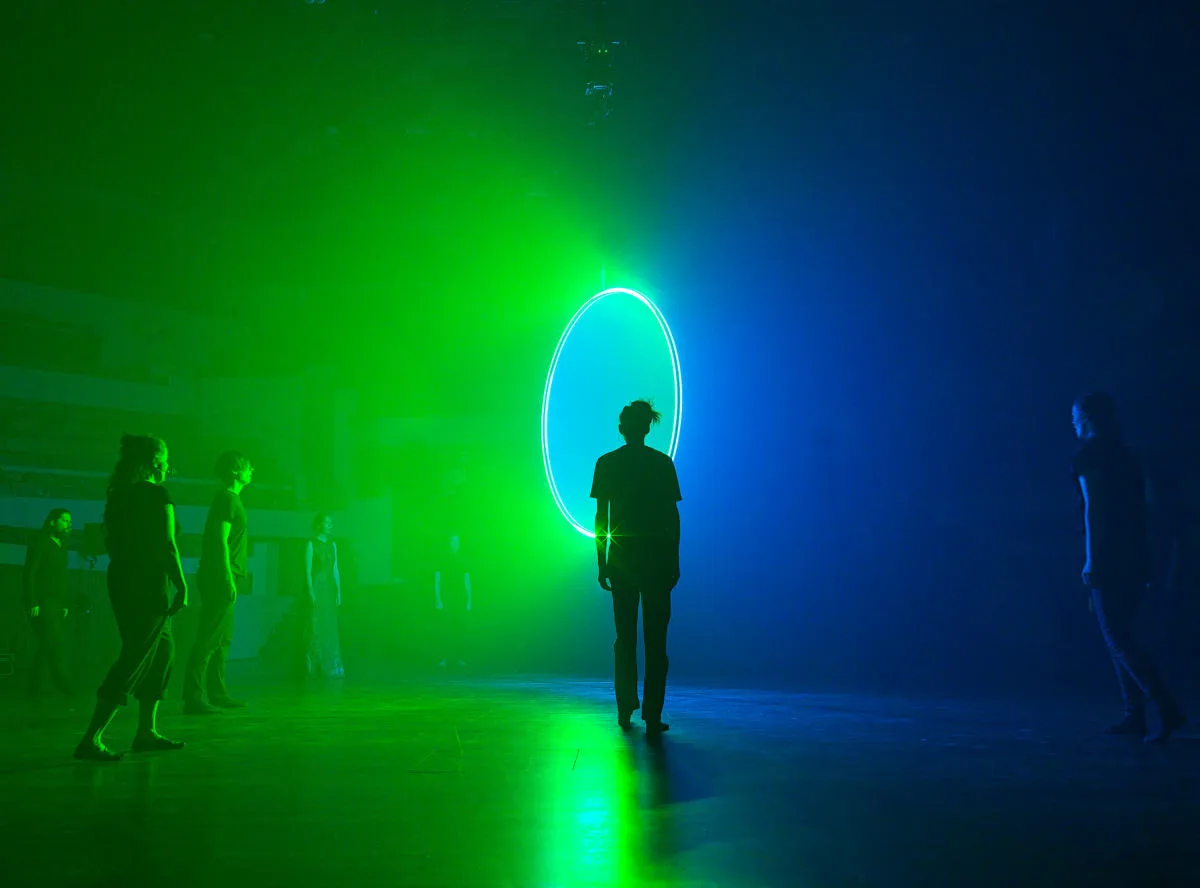
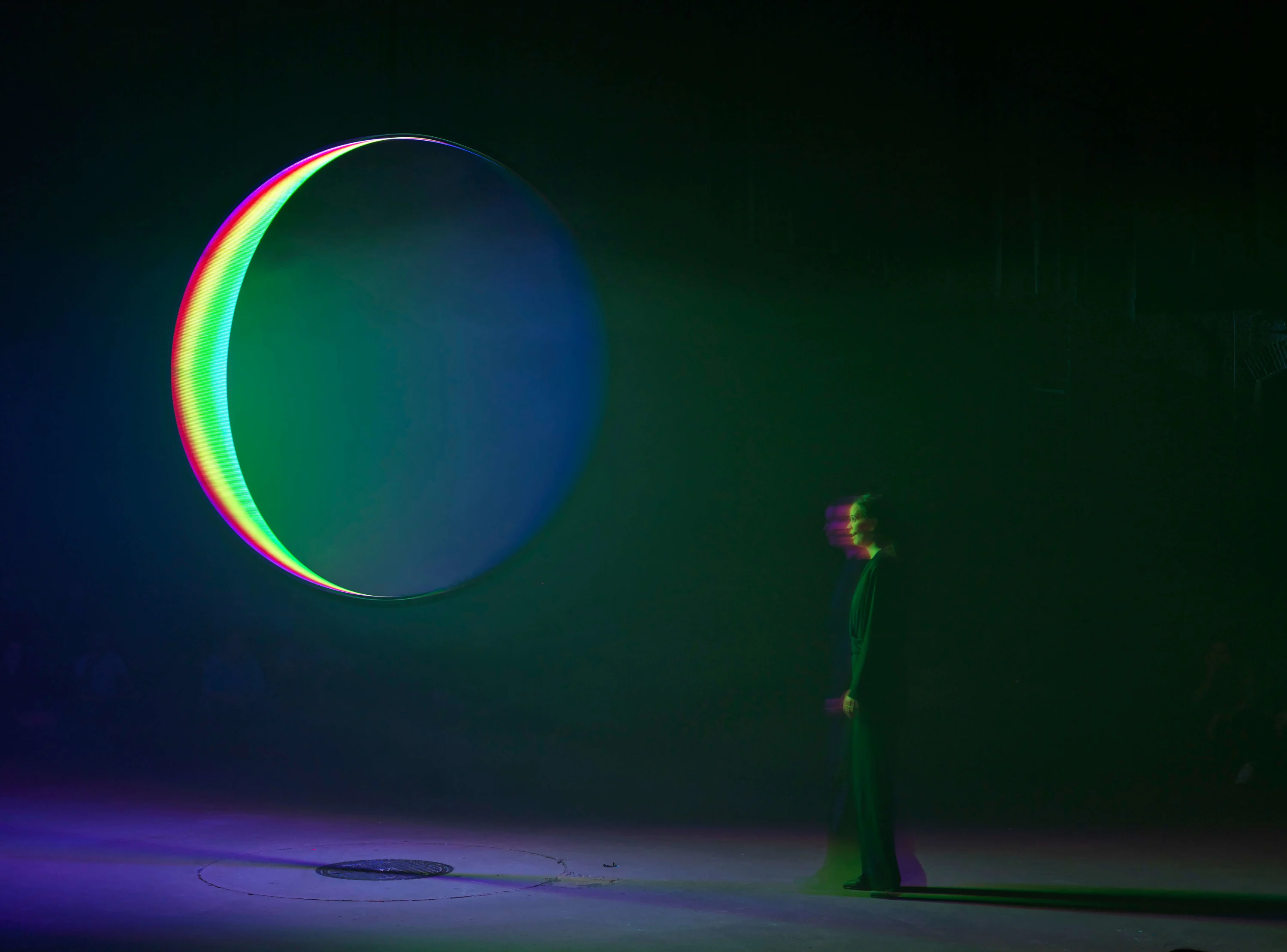

Between Light
Between Light, one of the duo’s most recent works, is perhaps the simplest yet most impactful piece they have created. Presented at Oude Kerk (Old Church), the oldest building in Amsterdam, it was a 25 metre long kinetic sculpture; a stick of white light curved by gravity and hanging high above the viewers. The design was partly inspired by their love for the high-wire artist Philippe Petit, who walked a wire between the towers of the World Trade Centre in 1974. “His balancing stick was slightly curved by the gravity, and held him in place,” they say. “We loved that idea of a straight line informed by gravity, and shaped into a slice of the horizon. We already wanted to bring the horizon into this piece, and our spiritual connection to the universe. The horizon is only visible because of the connection between the two: the sky and the earth.”
Over a 24 minute sequence, the sculpture would slowly descend and ascend, causing the surrounding church to disappear and reappear as the light touched it. In homage to the celestial movements of the solar system and how it divides our days, the piece was only performed during the “blue hour”: the twilight period just before the last sunlight has disappeared. “It meant this work was as much about darkness as light,” they say, “because you would enter the church during daylight, but when the light goes out at the end of the performance, you are left in complete darkness.”
This theme, of creating art that reminds us we are not separate from outer space but floating in it, is central to Children of the Light. And it is powerfully evident in their most recent piece, a video work, titled Pixel, in which the viewer’s perspective zooms in on the tiniest pixel to reveal an entire cosmos of lights lurking within it. “We see our role as strengthening the relationship between us and the universe,” says the duo. “You look into the sky and you see all these punctuated stars, far away, which are just the size of a pixel, but it's actually a planet or a big star. Even the earth could look like a pixel from far away. So we hope it can remind us about scale, and our role on earth.”
